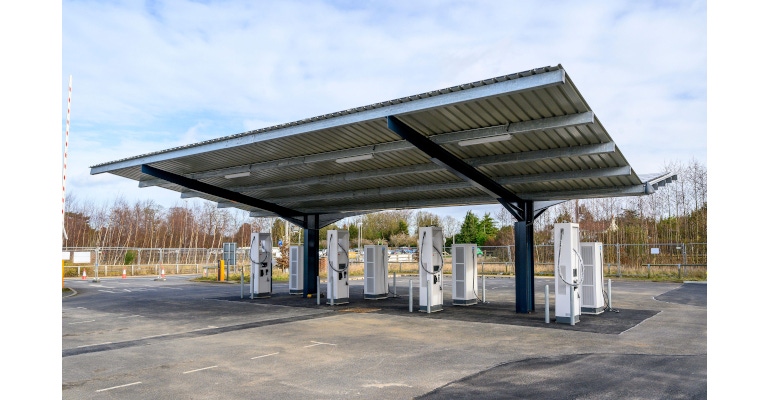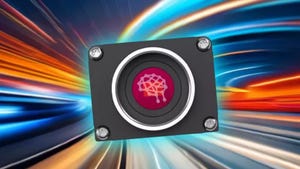Ask these 3 questions about cable management in order to protect your EV investment.

The adoption of electric vehicle (EV) fleets has surged in recent years, thanks to benefits like high fuel economy, lower operating costs, and performance that often matches or surpasses that of conventional counterparts. In fact, BloombergNEF estimates nearly a million EVs will be added each month to the global fleet count in the second half of 2022. To put that number in perspective, that’s about one EV added every three seconds.
This broad (and fast) adoption of EV technology is bringing charging infrastructure conversations to the forefront for fleet managers. There are many options for fleet charging at facilities, but a core component of this strategy comes down to cable management. EVs and their respective charging cables are valuable pieces of equipment that require ongoing care to operate at full efficiency and maximize ROI.
If you’re ready to invest in EV fleet infrastructure, but aren’t sure where to start, here are three questions to ask in order to build a cable management strategy that will support your EV investment and keep your business running smoothly.
1. What does your vehicle location & charging port variability look like?
Vehicle location and charging port variability is the first thing to consider in your cable management strategy. Where will your vehicles park for charging, and will they be in the same exact spot every time? What other equipment do you have in operation around your charging stations? Where are the charging ports located on the vehicles? After considering these questions, you can determine the optimal place to mount the cables, whether on a pedestal, ceiling or wall.
If your fleets will be parked in consistent locations, a pedestal cable management system might be viable. These free-standing charging stations keep cables off the ground and eliminate the need to wind the cable for storage after each use.
However, ceiling cable management systems could be a good fit if your work environment demands more location variability. As the name aptly suggests, these are mounted to the ceiling and keep work environments uncluttered by storing charging cables out of the way, preventing tripping hazards, and retracting cables quickly. Ceiling cable management systems have the added benefit of spring retraction, which helps offset some of the weight with heavier charging cables.
Wall-mounted charging stations and cable management systems can also work well in high-variability settings. These cable reels have similar benefits to over-head ceiling cable management systems and can feature spring retraction for safety. Both wall mounts and ceiling mounts prevent operators from lugging heavy cables over to EVs, which is safer and more efficient for charging. Additionally, the flexibility you gain from ceiling or wall mounts is critical in ensuring the infrastructure can withstand changes in vehicle design and charging port locations in the future, effectively future-proofing the investment.

2. Who will be handling and operating the cables?
The next questions to ask yourself when forming your cable management strategy are: Who will be handling and operating the cables? Who will be working around the charging stations? How do you limit trip hazards and manage worker access? How will these individuals ensure that charging cables stay off the ground to avoid being run over and damaged? Without a proper cable management system in place, trucks and vans can easily drive over misplaced chargers left on the ground, damaging the expensive equipment and rendering the charger out of service.
In addition to a suitable mounting system, fleet owners and operators should think through retraction options. Whether an automatic retraction with springs or an electric motor, these systems help cable handlers keep the chargers off the ground and boost workplace safety and efficiency.
A retractable, spring-driven cord reel uses a spring mechanism to provide the retraction force. As the cord is uncoiled and pulled out for use, tension builds up on the steel torsion ring, and once the electrical power is no longer needed, the stored energy in the torsion spring is released, retracting the cord back to the reel. If you’re considering this type of solution, look for top-quality reels that include long-life ball bearings and spring motors that are ideal for demanding applications.
The only downside to a spring-driven cable reel is that you have to leave a cable hanging at arm’s length or use a ladder or lift to access the cable end. Motor-driven reels solve these challenges and can be an effective option for EV charger cable management. These remote-controlled, motorized cable reels offer a quick way to provide drop-power, allowing users to payout and retract charging cables with the push of a button.
Once you assess the operating environment and likely cable handlers, it’s time to think about ADA compliance.
3. Where does ADA compliance fit in?
To adhere to the Americans with Disabilities Act (ADA), EV charging stations and cables must be accessible. This is particularly important for fleet EV charging stations at facilities designed, built, altered, or leased with federal funds. Even if federal funds don’t impact your fleet or operation, it’s still recommended to have at least one on-site EV charger with accessible mobility features to accommodate employees with disabilities.
ADA compliance entails incorporating the following accessible mobility features:
EV chargers must provide physical access to people who use mobility devices, such as wheelchairs, scooters, walkers, and canes.
Charging connectors must meet the requirements for operable parts—operable with one hand and no tight grasping, pinching, or twisting of the wrist, and no more than 5 pounds of force to operate.
Lightweight charging cables should be of sufficient length to charge a vehicle with various charging inlet locations.
Heavier and shorter direct-current fast-charging (DCFC) cables should be able to charge a vehicle positioned at least 60 inches away and be installed so that users can access the vehicle charging inlet, access aisle, and charger.
Charging cables cannot block or obstruct accessible routes when stored or when in use and connected to vehicles.
Innovation is underway to make charging solutions more accessible to everyone, but in the meantime, many promising solutions can address the issue of heavy charging cables. A cable management system and strategy are effective ways to make intentional, thoughtful investments for EV fleets that accommodate all kinds of operators.
EV Is the Future. Is Your Fleet Ready?
If electric vehicles are the future of your organization and fleet, you need to arm yourself with the tools to get the most out of your charging infrastructure. While every EV deployment is different, a cable management strategy will be critical in finetuning operations, fully leveraging your assets, and ensuring you get the maximum value from your investment.
About the Author(s)
You May Also Like



